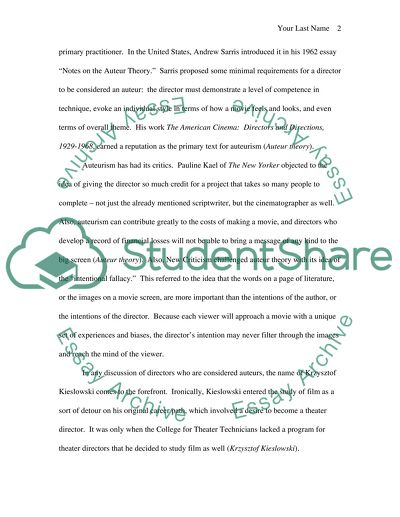Cite this document
(“Auteur theory Essay Example | Topics and Well Written Essays - 1500 words”, n.d.)
Retrieved from https://studentshare.org/visual-arts-film-studies/1515018-auteur-theory
Retrieved from https://studentshare.org/visual-arts-film-studies/1515018-auteur-theory
(Auteur Theory Essay Example | Topics and Well Written Essays - 1500 Words)
https://studentshare.org/visual-arts-film-studies/1515018-auteur-theory.
https://studentshare.org/visual-arts-film-studies/1515018-auteur-theory.
“Auteur Theory Essay Example | Topics and Well Written Essays - 1500 Words”, n.d. https://studentshare.org/visual-arts-film-studies/1515018-auteur-theory.


